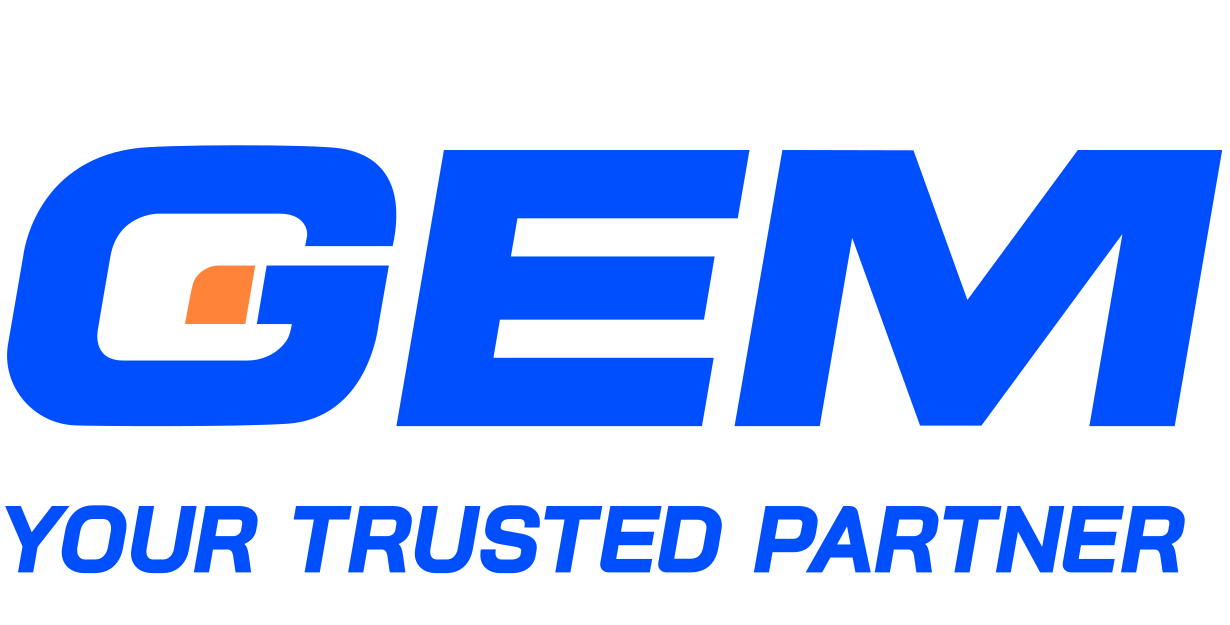Contents
- IT Outsourcing Landscape in 2025
- Strategic Benefits of IT Outsourcing for Business in 2025
- When It’s Best to Outsource IT Services
- IT Outsourcing: Common Trade-offs and How to Manage Them
- Future Outlook: The Evolving Role of IT Outsourcing
- Make your digital transformationseamless and future-ready
- Gain Competitive Advantages with GEM Corporation’s IT Outsourcing Services
- Conclusion
92% of the world’s largest 2,000 companies are already outsourcing IT services, reflecting a clear shift in how businesses approach technology operations. The benefits of IT outsourcing extend far beyond cost. IT outsourcing now is about gaining access to specialized expertise, responding faster to business needs, and increasing operational flexibility. As digital initiatives grow more complex in 2025, outsourcing has become a practical path for companies aiming to stay competitive without overextending internal teams. This article outlines the key business advantages of IT outsourcing today, what makes it effective, and when it delivers the most value.
IT Outsourcing Landscape in 2025

The IT outsourcing market continues to expand as businesses respond to growing pressure to modernize infrastructure, adopt new technologies, and manage digital complexity. Post-2020, the combination of cloud maturity, large-scale AI adoption, and sustained hybrid work models has changed both the scale and structure of outsourcing arrangements. The question of why outsource IT services now centers less on cost and more on capability, speed, and adaptability.
Several forces are shaping today’s outsourcing decisions:
- Cloud-first strategies
Cloud adoption remains a primary driver. According to Zealous System, 90% of businesses cite cloud migration and operations as a key reason to outsource IT services. Enterprises are looking for partners who can navigate multi-cloud environments, modernize legacy applications, and manage workloads across distributed infrastructure.
- AI and machine learning adoption
Demand for AI-capable vendors continues to grow. A report by Dreamix shows that 85% of businesses are using or evaluating AI and ML, which has created a talent gap that many firms address through outsourcing. Organizations seek partners with experience in data engineering, model deployment, and AI lifecycle management.
- Access to specialized skills
Over 40% of companies now cite access to deep technical expertise as a primary outsourcing driver. Skills in cybersecurity, DevOps, and platform engineering are in especially high demand, and outsourcing offers a faster path to acquire them at scale.
- Flexible delivery models
Outsourcing today includes a mix of onshore, offshore, and nearshore strategies. Nearshore delivery, in particular, is gaining traction, with Mordor Intelligence reporting a 5.3% CAGR, due to its alignment with collaborative workflows and regional compliance needs.
- Scalability and workforce variability
As hybrid work becomes standard, companies are restructuring teams and relying more on external providers to support variable workloads, 24/7 coverage, and project-based delivery.
The market reflects these shifts. Grand View Research estimates the global IT outsourcing market will reach USD 1.2 trillion by 2030, up from USD 744.6 billion in 2024. Growth is being driven by enterprises that now see outsourcing as a strategy to move faster, access scarce capabilities, and stay aligned with evolving tech demands.
Strategic Benefits of IT Outsourcing for Business in 2025

As technology shifts from a support function to a core growth driver, businesses are reevaluating how they structure IT. Below are 6 key ways IT outsourcing is creating tangible business value in 2025.
Financial Flexibility
Traditional in-house IT models come with high fixed costs—from salaries and benefits to infrastructure and ongoing training. Outsourcing shifts these expenses to a variable cost model, where organizations pay only for the services they consume.
- Outsourcing eliminates the need for upfront investment in hardware, software licenses, or office space.
- Pay-as-you-go pricing models align IT spending with actual business usage, making it easier to manage budgets during growth phases or downturns.
- CFOs gain more predictable spending patterns and clearer ROI metrics on IT investments.
This flexibility supports organizations looking to optimize cash flow without slowing down digital priorities.
Access to Specialized Expertise
Hiring and retaining top-tier IT talent remains a challenge, especially in areas like AI, cybersecurity, and cloud architecture. Outsourcing opens the door to skill sets that are often out of reach for internal teams, either due to cost, scarcity, or geography.
- Partners maintain large, cross-functional teams with deep domain knowledge and hands-on experience across industries.
- Many outsourcing firms invest in continuous training, certifications, and technology partnerships to stay ahead of the curve.
- Businesses can access niche roles, such as DevSecOps engineers, data scientists, and cloud reliability architects, without long recruitment cycles.
This access shortens project timelines and improves quality across delivery.
Operational Agility
Outsourcing frees internal teams to focus on strategic initiatives while placing day-to-day operations in the hands of experienced providers.
- Routine functions such as helpdesk, infrastructure monitoring, and system maintenance are handled externally, improving uptime and response rates.
- Providers often offer 24/7 support across time zones, helping organizations maintain continuity and serve global customers without building round-the-clock internal teams.
- With external partners managing IT operations, internal leaders can redirect attention toward product development, customer experience, and market expansion.
Scalability on Demand
Business demands rarely move in a straight line. Outsourcing provides the flexibility to scale IT resources up or down based on project scope, seasonal needs, or market conditions.
- Teams can expand quickly during product launches or digital rollouts, without long hiring cycles or onboarding delays.
- When demand slows, contracts can be adjusted without the complexity of internal restructuring or layoffs.
- Outsourcing partners often have predefined service packages and delivery models that support fast ramp-up and de-scaling.
This elasticity allows technology to keep pace with business growth without overbuilding capacity.
Security and Resilience
Security threats continue to increase in frequency and complexity. Outsourcing partners bring dedicated security teams, advanced monitoring tools, and tested protocols that many internal teams struggle to maintain.
- Providers often run 24/7 security operations centers (SOCs) to detect and respond to incidents in real time.
- Many are experienced in regulatory frameworks such as HIPAA, GDPR, and ISO 27001, helping clients stay compliant across markets.
- Outsourcing also strengthens business continuity by distributing risk and maintaining redundant systems and recovery protocols.
These capabilities support both day-to-day protection and long-term resilience.
Innovation Acceleration
Keeping up with emerging technology requires time, experimentation, and specialized knowledge. For many businesses, outsourcing is the fastest route to explore new ideas without slowing down operations.
- External teams can rapidly prototype and validate new technologies, from AI workflows to IoT deployments, without requiring heavy internal investment.
- Through access to vendor ecosystems and early-release technologies, outsourcing partners often bring innovation faster to production.
- Businesses can test high-risk or exploratory initiatives at lower cost and with limited disruption to core systems.
This approach supports innovation without burdening internal teams with additional complexity.
These 6 dimensions show how IT outsourcing has evolved into a strategic function. It supports growth, manages risk, and delivers capabilities that help businesses compete in a digital-first environment.
When It’s Best to Outsource IT Services
While the advantages of outsourcing IT are well established, knowing when to engage an external partner can make the difference between tactical support and sustained strategic value. Below are 4 scenarios where outsourcing delivers measurable impact:
- New technology initiatives without internal expertise
As businesses adopt AI, automate workflows, or transition to cloud-first models, many lack the in-house capabilities to execute effectively. Outsourcing gives access to specialized skills without long recruitment cycles or training costs.
- Periods of rapid growth or transformation
When organizations scale quickly, whether through product expansion, M&A, or global rollout, they often require IT capacity that internal teams can’t match. External partners can ramp up support, manage workloads, and adapt to shifting priorities without delay.
- Cost optimization directed by leadership
In response to margin pressure or budget constraints, many leadership teams call for leaner operating models. Outsourcing helps shift fixed costs to variable ones, streamline delivery, and improve ROI on tech investments.
- Market entry that requires regional IT support
Expanding into new geographies often involves navigating local compliance, user expectations, and infrastructure standards. Outsourcing to nearshore or regional providers ensures localized delivery with greater cultural and time-zone alignment.
IT Outsourcing: Common Trade-offs and How to Manage Them

The IT outsourcing pros and cons are not always clear-cut. While the advantages are compelling, businesses must manage a set of structural and operational trade-offs that come with relying on external vendors.
Communication and Time Zone Challenges
Outsourcing to offshore teams can lead to delays in feedback loops, inconsistent updates, and difficulty coordinating across distributed workstreams.
Mitigation strategies:
- Build teams with at least 2–4 hours of overlapping work time. In nearshore engagements, this is often built-in; for offshore, consider adjusting shifts or using follow-the-sun models.
- Define structured communication cadences, such as daily stand-ups, weekly status reports, and monthly performance reviews.
- Use collaboration tools with clear documentation protocols – Teams, Slack, Jira, and Confluence to maintain transparency across time zones.
- Appoint a dedicated delivery manager on both sides to coordinate tasks and escalate issues before they impact timelines.
Integration with Internal Teams
External partners can struggle to align with internal processes, leading to duplicated work, inconsistent standards, or role ambiguity.
Mitigation strategies:
- Start with a joint onboarding phase where internal and outsourced teams align on workflows, tools, and expectations.
- Use shared documentation repositories, common development pipelines, and unified project tracking systems to reduce silos.
- Co-locate vendor staff during the initial ramp-up phase, especially for high-impact or high-complexity projects.
- Create hybrid squads – blending internal staff with vendor resources, so accountability is shared and coordination becomes routine.
IP and Data Security Concerns
Giving third parties access to infrastructure and sensitive data raises questions around control, visibility, and regulatory exposure.
Mitigation strategies:
- Work only with vendors that meet recognized security standards such as ISO 27001, SOC 2, or GDPR compliance.
- Define layered access policies using the principle of least privilege – grant access only where required, and monitor usage continuously.
- Use secure VPNs, encrypted communication channels, and endpoint protection tools to manage remote access.
- Include data handling policies in the master service agreement (MSA), covering data residency, breach reporting timelines, and audit rights.
Vendor Lock-In Risks
Long-term reliance on a single provider can reduce flexibility, limit bargaining power, and increase switching costs.
Mitigation strategies:
- Use modular architecture and open APIs to avoid being tied to proprietary platforms or closed ecosystems.
- Limit long-term contracts to phased engagements with built-in checkpoints, allowing exit or renegotiation if performance or needs change.
- Maintain partial in-house capability or a secondary vendor relationship as a strategic backup.
- Retain ownership of code, documentation, and IP to preserve continuity in case of transition.
Governance and Service-Level Clarity
Lack of transparency around roles, responsibilities, and performance targets often leads to missed expectations and dissatisfaction.
Mitigation strategies:
- Define clear SLAs with quantifiable KPIs – response times, uptime, resolution windows, defect rates, and attach them to billing or bonus structures.
- Establish a cross-functional governance team to review metrics, approve scope changes, and resolve delivery issues.
- Conduct quarterly business reviews (QBRs) to assess alignment with broader goals, not just operational metrics.
- Include transition planning in the contract from day one, so both sides know how knowledge transfer and disengagement will be handled.
Future Outlook: The Evolving Role of IT Outsourcing

As organizations rethink their digital operating models, several shifts are redefining how IT outsourcing creates value:
- AI-augmented service models
Vendors are embedding artificial intelligence into service delivery, from automated testing and anomaly detection to AI-driven customer support and operations monitoring.
- Domain-specific outsourcing
Clients increasingly seek partners with technical depth and industry fluency. In sectors like fintech, healthtech, and telecom, providers are expected to understand compliance frameworks, user behaviors, and platform demands unique to each domain.
- Outcome-based delivery
Contracts are moving away from inputs (time, effort) toward measurable results (uptime, throughput, adoption rates). This model ties vendor compensation to business outcomes, raising expectations for accountability and alignment.
- Distributed team integration
With hybrid work models now standard, outsourcing is no longer isolated. External teams are expected to function as part of internal workflows, using shared tools, agile rituals, and joint KPIs.
- Security and compliance at scale
Heightened regulatory scrutiny and rising cyber threats are pushing vendors to invest in security operations, data governance, and audit readiness as core components of service delivery.
- Global delivery with regional nuance
Clients want global capability with local relevance – outsourcing partners must be able to scale across time zones while adapting to legal, cultural, and operational norms in each geography.
Make your digital transformation
seamless and future-ready
Accelerate your business growth with zero-disruption modernization services. Maximize the value of your current infrastructure, streamline processes, and cut expenses.
Gain Competitive Advantages with GEM Corporation’s IT Outsourcing Services

GEM Corporation ranks among the top IT outsourcing partners in Japan, ANZ, Asia, the EU, and the U.S., backed by a strong delivery track record and cross-sector expertise. With over 400 engineers and specialists, we bring a combination of scale and specialization that supports both enterprise transformation and high-growth innovation. Our recognition as a trusted ServiceNow and Databricks partner reflects our focus on delivering reliable, high-quality outcomes. Clients across 10+ countries rely on GEM for seamless execution and long-term collaboration.
We support forward-looking businesses with services that span cloud, data, AI, and application development. Our teams work closely with clients to structure delivery models that fit market dynamics and internal requirements. In regulated sectors like banking and healthcare, we help align systems with compliance expectations while improving usability and scalability. In high-velocity environments such as retail and logistics, we support fast product iteration and infrastructure evolution.
Core IT outsourcing services from GEM Corporation include:
- Digital Transformation
- Application Development
- Quality Assurance & Testing
- AI & Automation
- Data Services
- Cloud Services
Conclusion
The benefits of IT outsourcing now extend far beyond cost efficiency. As organizations pursue AI-driven operations, industry-aligned platforms, and faster time-to-market, outsourcing offers a flexible path to scale capabilities, manage risk, and accelerate innovation. From outcome-based delivery to integrated global teams, the model is evolving to meet both strategic goals and operational demands. Security, data governance, and domain fluency define vendor selection and long-term value.
To explore how GEM Corporation can support your growth through tailored IT outsourcing services, contact us!






